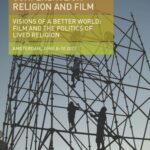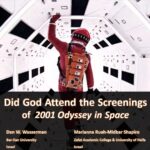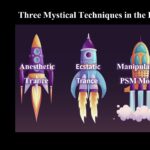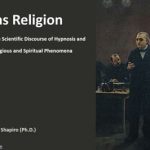The film 2001: Odyssey in Space is known as idiosyncratic and became a cult film, however was also harchly criticized. In this lecture we argue that the filmmaker (Stanley Kubric) uses hypnotic technics in order to immerse the audience in a mystical/spiritual trance experiences.
In the research we describe three such technics (the article is being prepared), while explaining the contradicting reactions to the film.
The lecture started with the quote of the Hassidic (Poland) narrative from the 18th century:
“Where is God to be found?”
This was the question with which the Rabbi of Kotzk had surprised several Torah scholars who came to visit.
They laughed. “What could his eminence mean? Surely, the whole earth is full of His glory!”
And the Rabbi himself then replied: “God can be found in the place where He is given entry.”
The lecture took part in the International Conference on Religion & Film in the Vrije Universiteit Amsterdam, co-sponsored with the Journal of Religion and Film, published by the University of Nebraska at Omaha. The conference, conducted on June 8th-10th, 2022, focues on “Visions of a Better World: Film and the Politics of Lived Religion”. It discussed subjects such as: What kinds of experiences do films produce? How do those experiences influence religion as it is lived and practiced in daily life?
Unfortinately, there’s no video/recording of the lecture, but the abstract and presentation are available. An article is expected.
For further researches (with another partner) in the field of spiritual cinema, see links below. One of these researches was published in Journal of Religion and Film
Abstract
“The God concept is at the heart of the film […] If the film stirs the emotions and penetrates the subconscious of the viewer, if it stimulates, however inchoately, his mythological and religious yearning and impulse, then it has succeeded…”. [Stanley Kubrick]
Although it has been over 50 years since the film was released, endless articles have been written in an attempt to solve the mystery of Stanley Kubrick’s cinematic masterpiece, 2001: A Space Odyssey. Our study deals with a yet unexplored aspect – Kubrick’s massive use of hypnotic techniques to create or induce in his viewers mystical/spiritual trance experiences. Many viewers reported such uplifting and life-altering experiences, which were sometimes even described in terms of rebirth, while others reported horrible tedium, cinematic sloppiness, and incoherence.
Kubrick himself did not hide his spiritual motivations in the creation of the film, addressing his desire to alter viewer consciousness. However, he never unearthed the methods he used during the creation of the movie to induce in the viewer a trance or mystical experience. Our study reveals a variety of techniques imbedded in the film, while focusing on three mystical methods known to disrupt the neurological habitus: anesthetic trance, ecstatic trance, and a manipulation of the Phenomenal Self Model (PSM).
Thus, we present Kubrick’s cinematic techniques in scientific terms, combining neuro-cinema, comparative religion studies, neuro-theology, and hypnosis techniques. While cinema aims to provide the viewers with a stirring experience that encourages them to immerse themselves in it, we maintain that 2001: A Space Odyssey transcends the normative cinematic experience with the hypnotic techniques it intentionally uses on its viewers. This may also explain why some audiences, who did not surrender to these techniques, were not mesmerized by the film, and reported a negative experience. Kubrick, therefore, is a pioneer in the development and conscious use of a “cinematic mystical model” that combines cinematic perceptions with neuro-mystical techniques.
More on the conference’s subject, from the CFP:
“Religion and film share a great similarity. Both are involved in world-building and meaning-making
practices. Both offer sources for inspiration. Both create symbolic and mythical worlds and it-could-be-otherwise realities, utopian as well as dystopian. As such, film can function as religion, a perspective that has inspired many scholars to analyze film from a hermeneutical perspective, looking for the religious dimensions of film. Mostly, such a perspective entails an analysis of the symbolic layers of film, the narrative and mythical elements, and the theological themes.”
Focusing on lived experience, we are interested in what film brings about on the level of the individual, but also on the societal and cultural level. What kind of experiences does film produce? And what is the impact of these experiences? Does watching a movie have, instead of being a temporary escape from reality, an impact other than entertainment? Does film have the power to change people? Can movies shape our hopes, fears, desires, and our involvement in the world? Can they create a hyperreality (Baudrillard) that forms the basis of how we understand social and political reality? And ultimately: does film have the potential to contribute to a better, or at least a different world, or the ability to change how we see and approach the world around us?
Language
English
Academic/Non-academic
Academic item
Bibliographical citation
Wasserman, Dan William, and Marianna Ruah-Midbar Shapiro, “Did God Attend the Screenings of 2001: Odyssey in Space?”, a lecture at the International Conference on Religion & Film, the Vrije Universiteit Amsterdam, June 10th, 2022.











